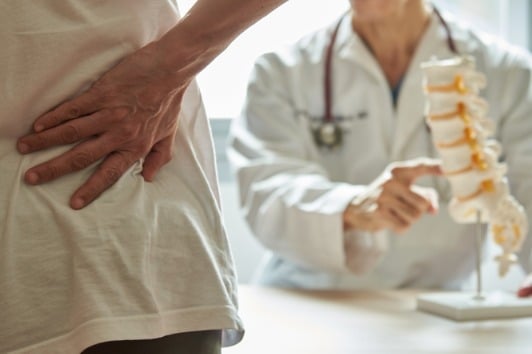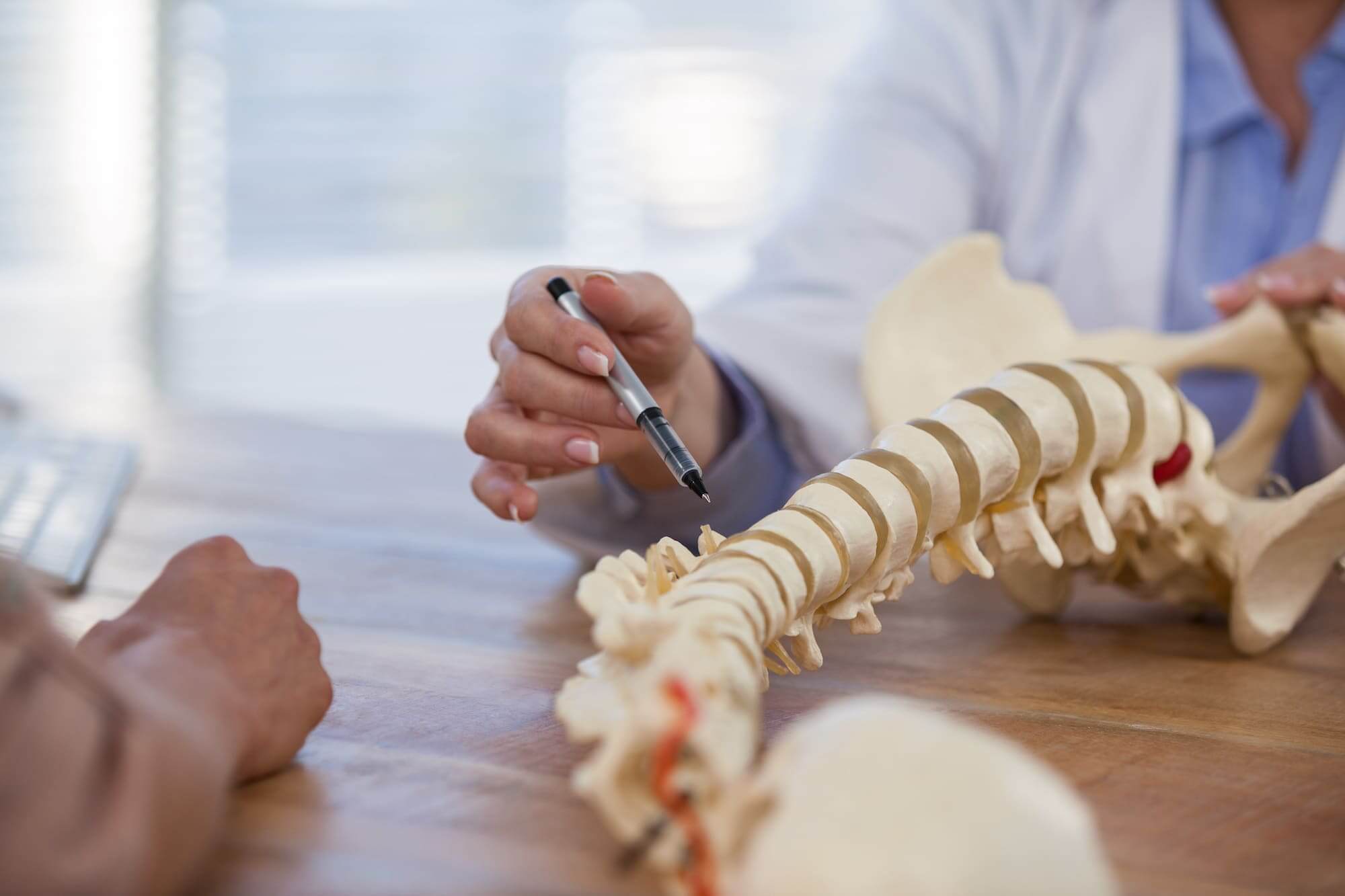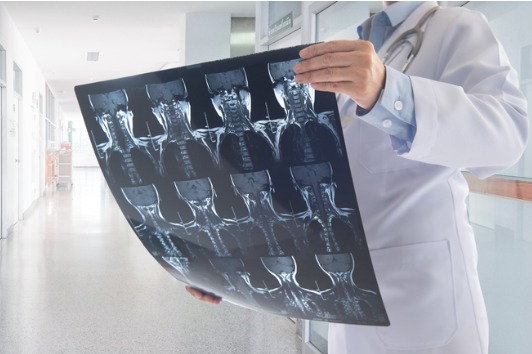Spinal Arthritis
Understanding the Symptoms, Causes & Treatments for Spinal Arthritis
Understanding Spinal Arthritis
Arthritis is derived from the two Greek words arthro– joints, and itis– inflammation. Together, arthritis means inflammation of joints. This term is also known as spondylosis which is the degenerative breakdown of the bones in our spine. As we get older, our body starts to break down from the “wear and tear” of daily activities. Although it’s something to be expected, especially when we get older, there are certain cases that can cause this process to start sooner or be more severe than others. For example, high impact sports/professions, trauma or injuries can accelerate the degenerative process causing increased arthritis in the spine. Research also shows that smoking plays a very large factor in speeding up the degenerative process of our spine. Just like arthritis in the knees or hands, arthritis in your spine usually presents as pain or sometimes stiffness. A lot of times, it’s worse in the morning and improves throughout the day as you “loosen up” and start moving around. Treatment varies from rest, physical therapy, to anti-inflammatories. However, there are certain situations where a more involved treatment plan such as injections and surgical intervention may be necessary.


Symptoms of Spinal Arthritis
Patients can have arthritis without having any symptoms. In fact, more than 90% of patients over 65 have signs of arthritis in their neck/back x-rays. However, not everyone has symptoms. Unfortunately for the patients who do have symptoms, they typically describe it as pain, stiffness and muscle aches. Oftentimes, symptoms are worse in the morning and improve throughout the day as they “loosen up” and “move around.” Specifically in the neck, pain may cause headaches and radiate from the neck into the shoulders or arms depending on the extent of nerve involvement. It can also cause headaches. Symptoms in the thoracic spine are generally pain and muscle aches in the mid-back that may “wrap around” to the front of your chest. In the low back, patients typically describe it as a “deep ache across the low back”. There may be pain and aching that radiates into the buttocks or down the legs depending if there are any nerves affected.
When to Seek Treatment for Spinal Arthritis
If you’re noticing symptoms associated with Spinal Arthritis and suspect a spinal issue, it’s crucial to consider consulting a board-certified spinal specialist. Reach out promptly to a certified spine surgeon for an accurate diagnosis and timely treatment. Early intervention can significantly improve your overall well-being and provide a broader range of treatment options, which may decrease as symptoms persist. The key to a successful and speedy recovery lies in addressing the root of the pain with your spine specialist as soon as symptoms arise.
While many people experience day-to-day back or neck pain, dismissing it as soreness, this may not be the case for everyone. If your pain persists for more than 10 days, it should be taken more seriously. Evaluate such prolonged pain with a spine surgeon to identify the root issue and determine the appropriate treatment. Additionally, be attentive to other signs related to back or neck pain that should not be ignored, including pain accompanied by fever, pain associated with loss of bladder control, and weakness/tingling/numbness in your arms or legs.
It’s important to note that these are general guidelines based on our expertise in spine care over the past three decades, recognizing that each patient’s symptoms may be unique.


Common Causes of Spinal Arthritis
Arthritis in your spine, just like any other joint in the body, is caused by inflammation due to the breakdown of supportive structures that surround your joints. Specifically to the spine, these supportive structures include intervertebral discs located between the vertebrae, ligaments in front and behind the vertebrae, and two facet joints located in the back of the vertebrae. The facet joints and the intervertebral disc between the vertebrae work harmoniously to allow movement- bending and twisting of your spine to carry out daily activities.
When one structure is not working, it creates more stress on the surrounding structures which eventually leads to faster breakdown of the entire structure. Think of a 3 legged table. If one of the legs is wobbly, the other 2 legs will have to carry more weight in order to keep the table stable. However, as time passes by, the 2 supporting legs will start to feel the impact and will start breaking down. Eventually, all 3 legs will be nonfunctional. Once the facet joints and intervertebral discs start breaking down, the space between the vertebrae decreases. This narrows the canal in which the nerves exit the spine and the vertebrae/facet joints to rub together more. Both scenarios cause irritation of the nerves and joints which leads to inflammation.
Diagnosing Spinal Arthritis
At your initial consultation your spinal specialists will complete a detailed medical history to review your symptoms and pain triggers as well as a comprehensive physical exam. X-ray imaging is also necessary for the diagnosis as this allows for visualization of the spinal anatomy. In some cases MRI and CT-scans may also be ordered.


Treatment Options for Spinal Arthritis
Fortunately, arthritis generally responds well to conservative treatment. A high-level, spine-specialized physical therapy regimen helps optimize the spine which improves mobility, strength and reduces inflammation. Pilates, yoga, low-impact exercises are also great ways to improve not only your spinal health but your overall health as well. Medications such as steroids or non-steroid anti-inflammatory medications are often utilized to manage symptoms of arthritis. If patients do not respond to medication or therapy steroid injections may be discussed to help calm symptoms. In some situations where non-surgical treatment has failed surgery may be warranted. Talk to your spine specialist about your condition to find which treatment is best for you.
How to Help Prevent Spinal Arthritis
Degeneration of the spine is a part of the natural aging process. However, genetics, smoking, trauma or high impact sports may speed up the degeneration process. Maintaining a healthy lifestyle with a well-balanced diet, along with low impact and core-engaging exercise routine may help slow down the degeneration process.


